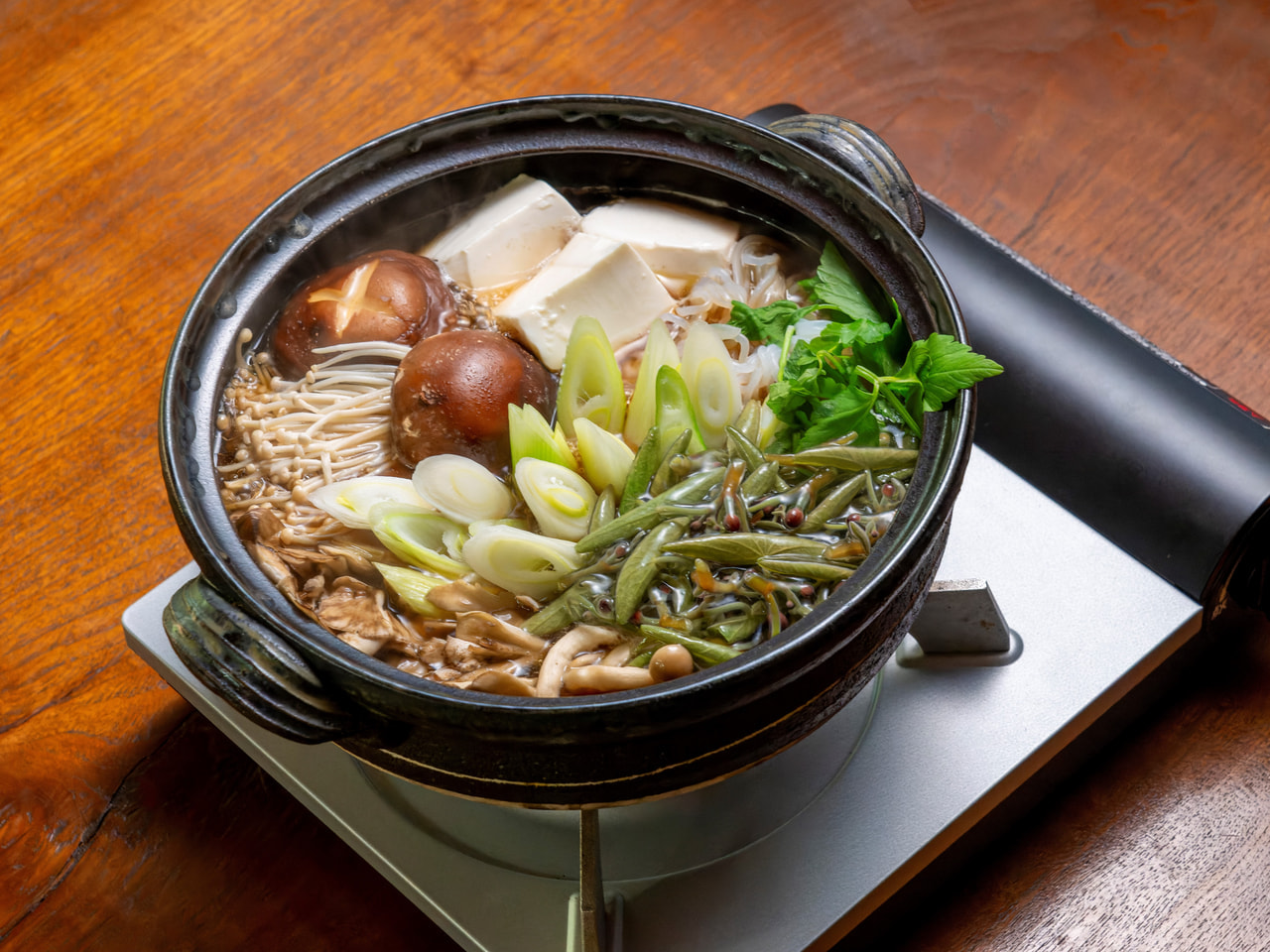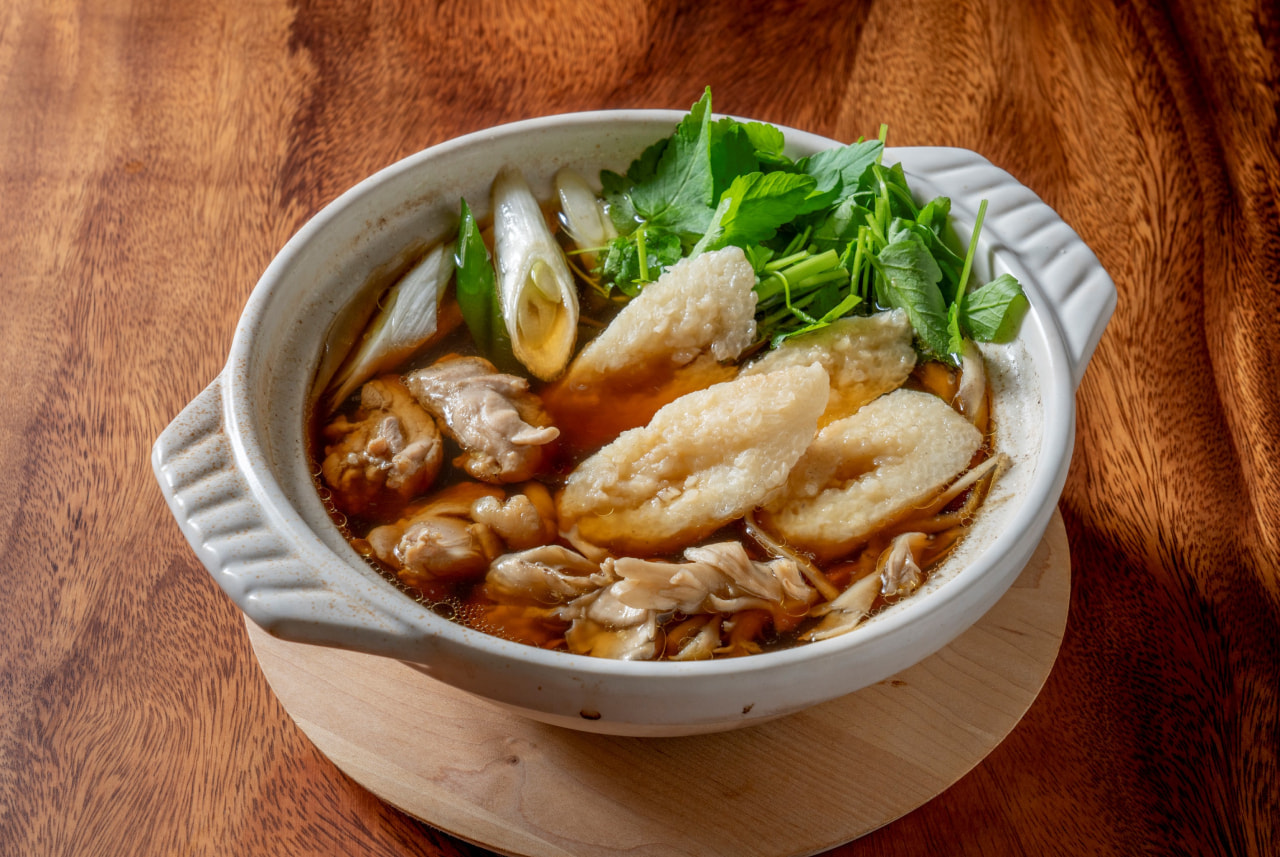Kiritanpo nabe is a hot pot with the unique ingredient called tanpo. Tanpo is cooked rice that is mashed and wrapped like a log onto a thick skewer made from local cedar trees. The rice skewers are grilled over charcoal. In olden times spears used for practice were wrapped at one end with a soft covering called tanpo. The log-shaped rice cake somewhat resembles the tanpo hence the name.
Local Hinai chicken, burdock root, mushrooms, leeks, seri (a green vegetable dropwort), and other vegetables are stewed in a soy sauce broth in a hot pot. The grilled rice tanpo is torn off the skewer and added to the hot pot.
It’s said that kiritanpo nabe originated in the Odate and Kazuno areas of northern Akita in the wintertime by traditional hunters and woodcutters who traveled and carried preserved food with them. Nowadays it is customary to serve kiritanpo nabe to farmers as thanks after autumn’s first rice harvest. Akita is known for its production of rice. The umami-rich dashi on first sip brings a happy sensation after a long day’s work in the fields. Umami is a partner in this relaxing time.



